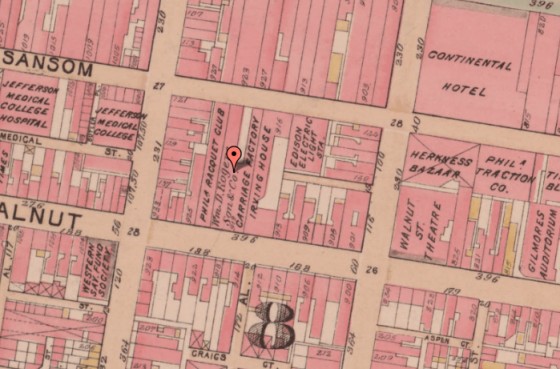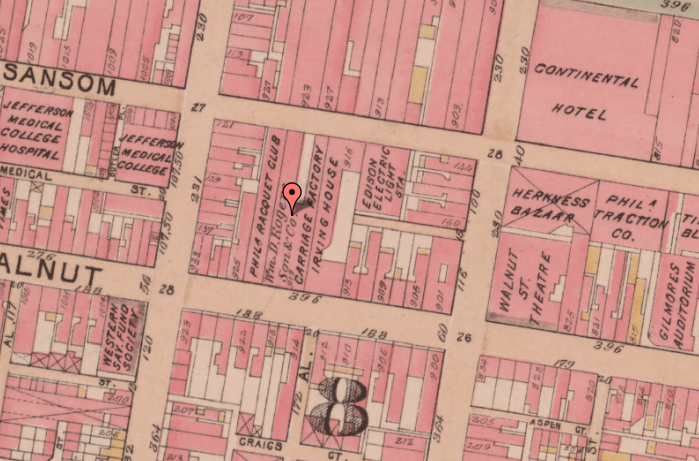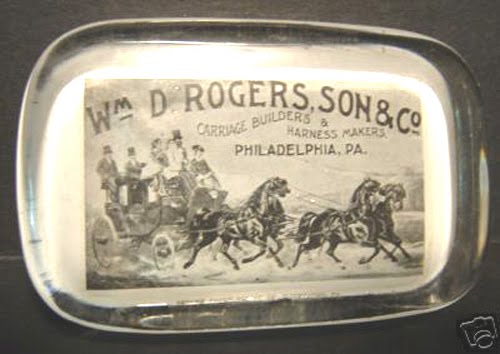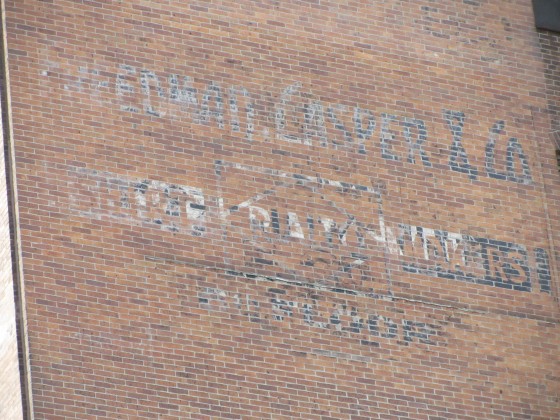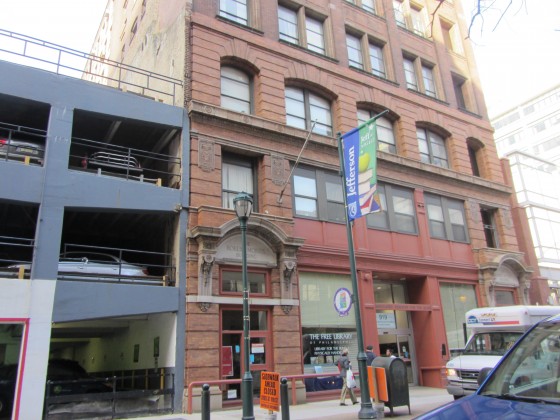The building at 919 Walnut St, identified by lettering on the edifice as the Robert Morris Building, is not to be mistaken with the Robert Morris Building apartments at 17th and Arch. This far more modestly sized building does have its own unique history though. At one time the residence for the prominent Francis Fisher family, the building made its first mark on the city’s landscape as the William D. Rogers Son & Co. Carriage Factory. The image here below, taken from G.W. Bromley’s 1895 Philadelphia Atlas shows 919 Walnut St. during this occupancy.
According to Coach Built, Rogers Son & Co. was “one of the nation’s largest and most prominent carriage builders of the mid to late 19th century [and] they made quite a few bodies for automobiles before their demise . . . as early as 1894 the concern began its experience in building automobile bodies, making the first limousine and the first touring car bodies turned out in Philadelphia.” The image here below, taken from Bottles, Booze and, Back Stories, depicts a promotional serving tray sponsored by Rogers Son & Co.
From “Harness Makers” to “Shirt Makers,” the building would gain new occupants in the early part of the next century. According to Volume 89 of The Clothier and Furnisher, published in 1916, Freedman, Casper & Co. Shirt Makers established their business at roughly this time, occupying the old carriage factory on Walnut. According to The Clothier and Furnisher, Freedman et al achieved success with their Rialto shirt line, which retailed “from $1 to $10—with emphasis on the $1, $1.50 and $2 numbers—and especially featuring silks.” Though no images are available of Freedman, Casper & Co. in their prime, a ghost sign, shown here below, remains visible on the side of the current structure even today to lend evidence of their residency.
Today, the structure is occupied by Associated Services for the Blind and Visually Impaired. Moving there in 1975, its informational website tells that “What started as the Pennsylvania Working Home for Blind Men in 1874 exists now, more than 125 years later, as the largest 501 (c) (3) non-profit organization serving the needs of people who are blind or visually impaired in the Delaware Valley.” The facilities also feature Philadelphia’s Free Library for the Blind & Physically Handicapped.
–David Tomar

